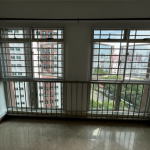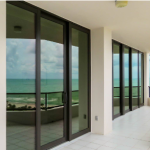Is Your Window Letting in Water When It Rains? Find Out Common Causes, How to Repair the Leak, and When It’s Time for a New Window!
In a city like Singapore, where sudden tropical downpours are common, window leaks can quickly turn into a major inconvenience. Not only does water seep into your home, but it can also cause damage to walls, flooring, and furniture, creating costly repairs. Whether you live in an HDB, a condominium, or a landed property, window leaks during rain are a common issue faced by many homeowners.
There is homeowner is experience problems of leaking window problem in the past 6 years and “replaced 3 times” but the problems persisted. Let’s explore what are the common issue for such windows.
In this post, we’ll dive into the common causes of window leaks when it rains, how to troubleshoot and fix these leaks, and when you should consider replacing your windows altogether. Need professional help? 9reno.com is here to offer expert window repair and replacement services in Singapore.
Common Causes of Window Leaks During Rain
There are several reasons why your windows may be leaking during heavy rainfall. Understanding the underlying cause will help you decide on the right course of action for repair or replacement.
1. Worn-Out Window Seals
Over time, the rubber seals around windows can deteriorate due to constant exposure to the elements. When these seals crack or wear out, rainwater can seep through, especially during heavy downpours. Aged or damaged seals are one of the most common causes of window leaks.
2. Faulty Installation
If your windows weren’t installed correctly from the start, leaks may occur. Poorly sealed edges, gaps between the frame and the wall, or unlevel installation can allow water to penetrate the structure when it rains.
3. Clogged or Damaged Weep Holes
Weep holes are tiny drainage openings found in many windows that help water drain out. If these holes become blocked with dirt or debris, water can collect inside the window frame and eventually leak into your home.
4. Structural Shifts
Over time, your home may settle or shift slightly due to weather conditions, temperature changes, or aging. This can create gaps between the window frame and the surrounding wall, allowing rainwater to enter.
5. Poorly Fitted Window Frames
Windows that no longer fit snugly in their frames due to wear and tear or structural changes in the home can cause leaks. Even slight gaps can let in moisture during a rainstorm, which then trickles into the home. A new replacement of window also need a special care and ensure the gaps are properly waterproof and sealed. Select a correct window frame section is essential.

Methods to Repair Leaking Windows
Once you’ve identified the cause of the leak, it’s time to take action. Here are the most common methods to repair window leaks and protect your home from further water damage.
1. Reseal the Window
If the window seals have deteriorated, resealing is often a quick and effective solution. A silicone-based caulk or sealant can be applied to close gaps around the window edges, preventing water from seeping in. Application on the exterior.
2. Replace the Weatherstripping
Weatherstripping creates a barrier to prevent air and water from entering the home through the window frame. Replacing old, cracked, or damaged weatherstripping is an inexpensive fix that can make a big difference in keeping rainwater out. If the water is dripping of the frame, installation of weather plate on the frame is important if the gaps of the frame is big.
3. Clean or Unclog Weep Holes
Blocked weep holes are a common cause of leaks. Simply clean out the dirt or debris with a small brush or toothpick to restore proper drainage and prevent water from accumulating in the window frame. Remove the clog and do not seal it off if it did by previous contractor.
4. Install Flashing Tape
Flashing tape is a waterproof adhesive tape used to seal gaps around windows and doors. Applying flashing tape around the exterior of your windows can reinforce weak spots where water might enter.
5. Repair or Replace the Window Frame
If your window frame has become warped or damaged, it may require more extensive repairs. In some cases, replacing the entire window frame might be necessary to eliminate leaks and restore proper functionality.
6. Check the External Wall Cracks
If the external wall either brick wall or concrete wall, if there is a cracks around the window area may result water seepage through the cracks line. Repair and fix the cracks line externally, including apply necessary waterproofing to stop the water. As most of HDB and condo are high rises building, it will need to arrange when there is external repainting programs where boomlift or gondola is scheduled. For serious cases, you may consider to deploy ” spider man” or rope access to repair your problems.

When Is It Time to Replace Your Window?
While repairs can often fix minor leaks, there comes a point when it’s more cost-effective to replace your windows. Here are some signs that it’s time for a window upgrade:
1. Repeated Leaks
If your windows continue to leak even after several repairs, it’s likely that the window itself is too old or damaged to function properly. At this point, replacement may be a better long-term solution.
2. Visible Damage
Cracked window panes, warped frames, or peeling paint are all indicators that your windows have seen better days. These issues can compromise the structural integrity of your windows and increase the likelihood of leaks.
3. Poor Energy Efficiency
Older windows are often less energy-efficient, allowing heat to escape during cooler months and letting in too much sunlight during hot periods. If you notice higher utility bills or temperature fluctuations, replacing your windows can improve energy efficiency and prevent future leaks.
4. Difficulty in Opening or Closing
Windows that are hard to open or close properly are often a sign of wear and tear. Malfunctioning windows may not seal tightly, which can lead to water intrusion during rain.
5. Condensation Between Panes
If you notice condensation forming between double-pane windows, it’s a sign that the seal between the panes has failed. This can not only lead to leaks but also reduce the insulation and efficiency of the window.
Troubleshooting Tips for Homeowners
Before calling in the experts, here are some basic troubleshooting steps you can take to assess your window leak before calling for expert:
- Inspect the Window Frame: Check for any visible cracks, gaps, or signs of deterioration in the frame or surrounding wall.
- Test the Weep Holes: Pour a small amount of water on the window frame and see if it drains out through the weep holes.
- Examine the Weatherstripping: Look for cracks or gaps in the weatherstripping around the window, especially on older installations.
- Check the Slope: Ensure that the area around the window is sloped away from the house to prevent water from pooling and leaking through the frame.
Need Help to fix the Leak ?
Is your window leaking during the rain? Don’t let water damage your home and belongings! Contact 9reno.com for expert window repair and replacement services in Singapore. Whether it’s resealing, repairing, or replacing your windows, we’ll ensure your home stays dry and secure.
Conclusion
Window leaks during Singapore’s frequent rainstorms can lead to costly repairs if left unaddressed. By identifying the cause of the leak, applying the appropriate repair methods, and knowing when to replace your windows, you can protect your home from further damage. For professional help, trust 9reno.com to handle all your window repair and replacement needs.
Further reading :
- “Window Frame Wall Crack Repair Service in Singapore: Say Goodbye to Annoying Cracks”
- Spalling Concrete Repair in Singapore: Types, Methods, and Why








